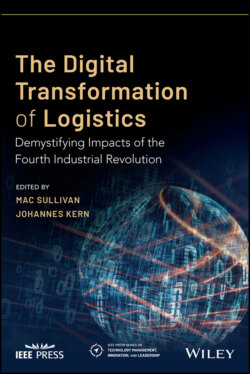Читать книгу The Digital Transformation of Logistics - Группа авторов - Страница 57
Skills
ОглавлениеPeople working in IoT logistics need to have the right skills to get Things connected and get the best out of big data (Heckel 2017). This involves know‐how of IoT technology, logistics process understanding, data analysis, and systems. Companies who want to make full use of IoT have to develop such multiskilled logistics employees.6 On a management level, this requires skills to “see” supply chains from an IoT point of view. This contains the abilities to handle the above‐shown topics: “get connected,” “get decisions,” and “get prepared.” On an operational level the following skills are needed:
Data analytics – skills to handle and analyze big data and discover new insights/patterns of the IoT logistics processes.
Process mapping and description of reaction processes – understand the actual processes and define/describe (for automated execution) potential reaction processes on detected deviations.
Ability to react faster – to get full advantage of online data, fast reactions are necessary: Is the associate prepared for this? Does he have the authorization to do so?
Check reliability of IT/AI decisions – Is the data correct? Do the automated/autonomous decision‐making processes make the right decisions and show the expected results?
Human–machine interaction – with more automation and robotics, especially in handling areas like goods receiving, warehousing, and loading/unloading, the interaction between robots and machines will only increase (Klumpp 2018). Is your staff prepared and trained how to work with a robot? In the case of small technical errors, can your staff troubleshoot the issue in terms of working with the software program of the robot, or can they do maintenance on the machine, such as exchanging batteries or conducting simple repairs?
